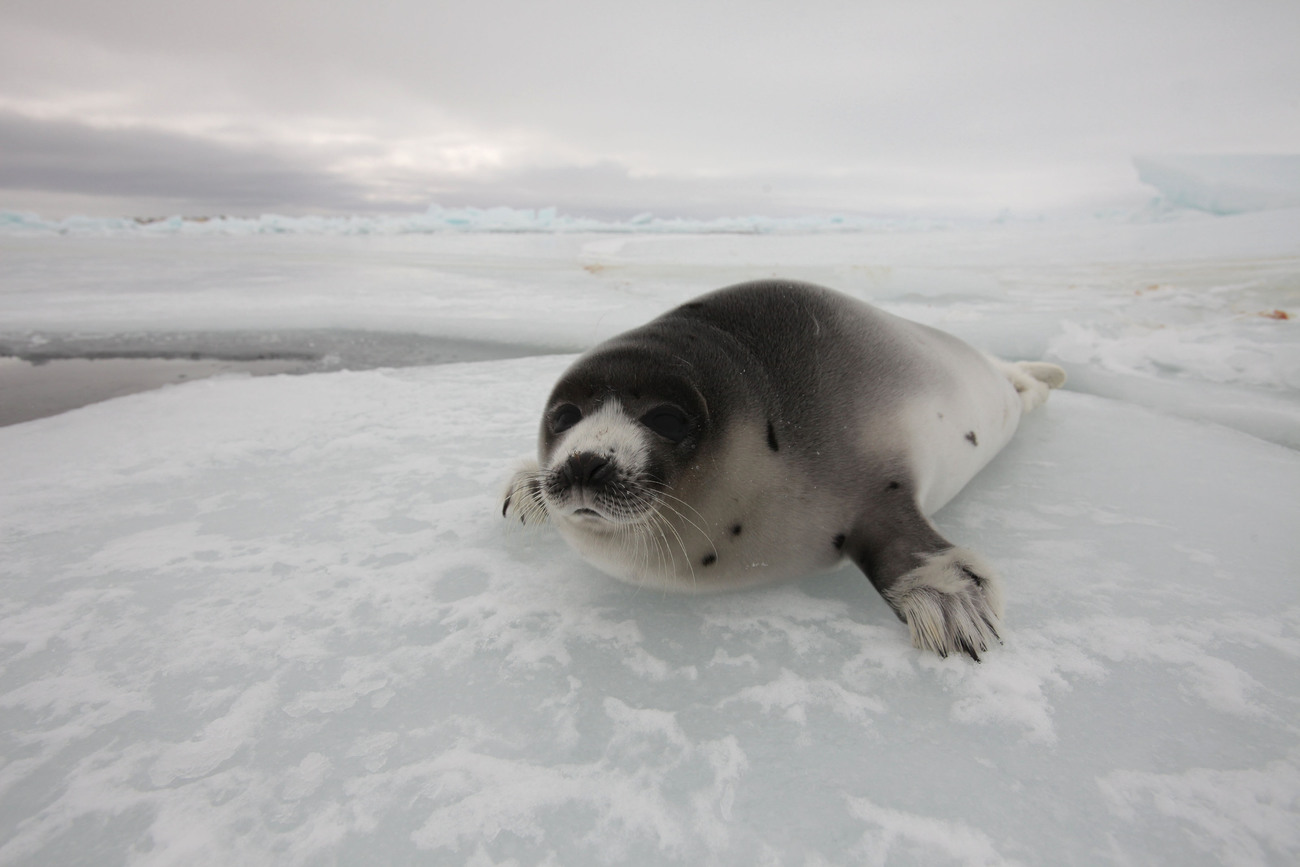Sheryl Fink
Threats against harp seals continue in 2021
Threats against harp seals continue in 2021

On the east coast of Canada, spring is in the air…the snow is turning to slush, the robins are returning, and female harp seals are gathering to give birth to their pups on the pristine ice floes. Tragically, the climate is threatening to wreak havoc on the seal pup nursery yet again this year.
Melting sea ice poses a serious threat to harp seal pups. Harp seal mothers rely on a stable ice platform to give birth and nurse their pups. Once the mothers leave, pups still need ice to rest on as they learn to swim and feed on their own. 2021 is turning out to be a year with well below-average ice coverage, the lowest since 1969 when ice measurements first began. While it is too early to say exactly what impact this might have on the harp seal population, seal pups will likely die as a result of being crushed in the ice, drowned, or abandoned on shore where they will be vulnerable to predators. It is also bad news for those hoping to view these beautiful animals: for the fifth time since 2010, tours to the seal nursery in the Gulf of St Lawrence have been cancelled due to lack of ice.
With the annual commercial seal hunt set to begin in a few short weeks, is there any hope that this species will make it through this intense season of human and climate-related dangers?
I’m happy to tell you that, yes, there is. Canada’s commercial seal hunt continues to be an industry in steep decline. Since the EU ban on commercial seal products in 2009, the number of seals killed has plummeted, despite the Canadian government maintaining an allowable catch of 400,000 harp seals. In fact, the number of seals killed has dropped by 90% between 2006 and 2019, and due to COVID-19 restrictions, most of the 2020 commercial hunt did not occur. With 36 international bans on seal products, there appears to be little demand for the unnecessary items derived from the annual slaughter such as luxury fur garments and seal penis energy drinks.
A history of failure
Some fishermen argue that the government should invest more money in the sealing industry. But anyone who has been around this issue for a while knows this approach has been tried – and failed. The reason the seal hunt was revived from obscurity in the mid-1990s was due to a massive scapegoat-and-subsidy program launched by the Government of Canada by the Minister of Fisheries. In the wake of the collapse of the Atlantic cod fishery, he blamed seals for destroying cod stocks (spoiler alert: it wasn’t seals, it was overfishing), increased the allowable catch of seals, and introduced a direct subsidy, essentially paying fishermen to kill seals.
Over the next two decades, successive governments wasted hundreds of millions of dollars trying to create an economically viable sealing industry in Canada. They provided direct support for sealers, invested heavily in product development, tried to create international markets for seal products, and fought (and lost) legal challenges against the EU trade bans. But it was all for nothing: the value of the seal hunt today is the lowest it has ever been.
It’s also not surprising that slaughtering hundreds of thousands of seals and leaving their dead bodies on the ice did absolutely nothing to help cod stocks recover. That’s because the problem with cod stocks was not predation by seals. It was systematic overfishing and mismanagement – concerns that had been raised repeatedly by inshore fishermen, scientists and experts – and ignored.
Seal predation was not the problem then, and it is not the problem now.

The spread of misinformation
The sealing industry continues to spread false information suggesting that seals are competitors with fishermen for commercially important species such as capelin, crab, and cod. Recent publicity stunts such as slicing open the belly of a bearded seal (a relatively rare and uncommon species in Eastern Canada), and claiming their stomach contents as “evidence” that seals need to be culled, is completely unscientific at best, and blatantly dishonest at worst. To give these claims any sort of credibility at all is an insult to the years of research conducted by legitimate scientists who study ecosystem interactions and the impacts of seal predation on fish stocks. Research that concludes there is no scientific evidence to suggest that culling seal populations would be of any benefit to fishermen. To the contrary - culls of seals could actually have unexpected and unintended consequences for ecosystems.
If there is one thing to be learned from Covid-19, it is that it is critical for governments and decision makers to listen to the advice of scientists. Seals, whales, and seabirds are not “competition” to be eliminated: they are critical components of healthy, functioning marine ecosystems.
It’s time to find real solutions
Harp seals are going to need our help if they are to survive the deterioration of their critical ice habitat. Continued overfishing, climate change impacts, ghost fishing gear, and marine plastic debris are all having a greater impact on fish stocks than seal predation. You can help us by taking action and asking the government of Canada to support initiatives that protect seals and their ocean habitat.
As the commercial seal hunt fades into history, IFAW remains committed to finding long-term solutions that address the core threats to animals. Solutions that are backed by science. Solutions that benefit, animals, people, and the place we call home.
-Sheryl Fink, IFAW Campaigns Director-Canada Wildlife, Programs
Related content
every problem has a solution, every solution needs support.
The problems we face are urgent, complicated, and resistant to change. Real solutions demand creativity, hard work, and involvement from people like you.